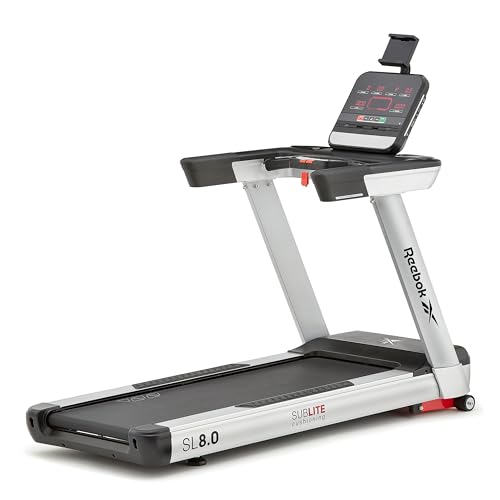Treadmill Non-Electric: The Eco-Friendly Fitness Solution
In an age dominated by electric devices and high-tech gizmos, the simple non-electric treadmill sticks out as a beacon of simplicity and efficiency. Frequently eclipsed by their high-tech equivalents, non-electric treadmills offer various benefits that cater to a sustainable way of life and a solid workout. This article will explore the advantages, performance, and variety of non-electric treadmills, making a strong case for their function in modern fitness regimens.
What is a Non-Electric Treadmill?
A non-electric treadmill, also known as a manual treadmill, runs without electric power. Rather, it relies on the user's energy to move the belt. This type of treadmill generally has a curved or flat running surface area and a belt that moves as the user walks or runs, thus providing a full-body cardiovascular exercise.
Secret Features of Non-Electric Treadmills
| Function | Description |
|---|---|
| Source of power | Manual operation (user-powered) |
| Design | Curved or flat treadmill surface |
| Mobility | Typically light-weight and easy to move |
| Resilience | Less mechanical components; frequently made of top quality materials |
| Cost | Usually more budget friendly than electric treadmills |
| Footprint | Typically smaller, making them suitable for minimal spaces |
| Noise Level | Quieter operation compared to electric variations |
The Advantages of Non-Electric Treadmills
1. Eco-Friendly
Non-electric treadmills are a sustainable option for fitness lovers. Without Manual Treadmill Uk , they lower carbon footprints and overall energy usage.
2. Cost-efficient
With fewer mechanical parts and no circuitry systems, non-electric treadmills are generally more economical. This makes them accessible and enticing to people looking to maintain a healthy lifestyle without breaking the bank.
3. Increased Workout Intensity
Since the user powers the belt, they have complete control over their exercise's strength. The harder you push, the more calories you burn. This self-powered feature motivates a more engaged exercise, pressing limits for a much better fitness result.
4. Compact and Portable Design
Many non-electric treadmills have a light-weight building and construction and smaller sized footprint, making them simple to store and transportation. This feature allows users to integrate cardio exercises into numerous settings, whether in the house, in the office, or at a fitness center.
5. Lower Maintenance
Non-electric treadmills have fewer moving parts than electric versions, which equates to decrease upkeep expenses and fewer mechanical failures in time.
Kinds Of Non-Electric Treadmills
Non-electric treadmills been available in numerous designs to cater to varied physical fitness needs. Here's a quick overview:
| Type | Description |
|---|---|
| Curved Manual Treadmill | Functions a curved running surface for a natural gait. Exceptional for sprinting and interval workouts. |
| Flat Manual Treadmill | A straightforward design comparable to conventional treadmills but powered by the user's motion. |
| Foldable Manual Treadmill | Compact style that can be quickly folded and saved away when not in use. Suitable for little home. |
| All-Terrain Manual Treadmill | Created for outside usage, these treadmills typically feature a rugged develop and traction control. |
Frequently Asked Questions (FAQ)
1. Are non-electric treadmills suitable for beginners?
Yes, non-electric treadmills can be ideal for novices. Users can change the intensity and speed of their workouts based on their physical fitness level.
2. Can I use a non-electric treadmill for running?
Definitely! Numerous non-electric treadmills, specifically curved designs, are created for running. Their self-powered nature enables users to engage in jogging or sprinting.
3. What types of workouts can I carry out on a non-electric treadmill?
Users can take part in numerous exercises, consisting of walking, jogging, running, interval training, and even hill exercises by changing their position.
4. How do I keep a non-electric treadmill?
Basic upkeep consists of frequently examining the belt for wear, guaranteeing it is centered, and cleaning the surface area to avoid particles from impacting motion.
5. Are non-electric treadmills noisy?
Non-electric treadmills tend to be quieter than electric ones, as they do not have motors that can produce sound. Users may still create noise based on their speed and weight.
Tips for Maximizing Your Non-Electric Treadmill Workouts
To get the most out of your non-electric treadmill sessions, think about the following suggestions:
- Warm-Up Properly: Always begin with a warm-up session to prepare your body for the exercise.
- Incorporate Interval Training: Alternate between high-intensity sprints and moderate walking to improve calorie burn and enhance endurance.
- Focus on Form: Maintain correct posture and form while running to reduce the danger of injury.
- Hydration is Key: Keep water close-by to remain hydrated during your workouts.
- Track Your Progress: Use a physical fitness tracker or smartphone to monitor your exercise efficiency and progress in time.
The non-electric treadmill sticks out as a long-lasting, environmentally friendly piece of exercise equipment that effectively caters to both newbies and experienced fitness lovers. With its multitude of advantages, including cost-effectiveness, ease of usage, and portability, it provides a sustainable alternative in the progressing fitness landscape. For those wanting to streamline their exercises while welcoming an active lifestyle, non-electric treadmills might be the best service. It's time to redefine your exercise experience away from the diversions of technology and toward the fundamentals that keep you healthy and fit!

